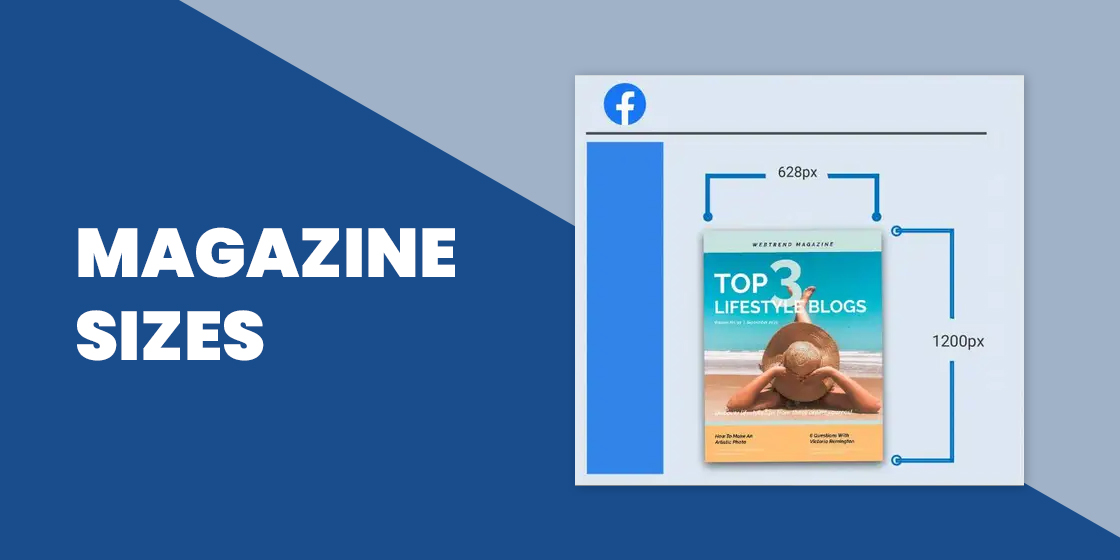Have you ever picked up a magazine and wondered why it feels so comfortable in your hands? Or maybe you’ve noticed that not all magazines are the same size. Some fit perfectly into your bag, while others stretch wide like a coffee table book. So, what makes these sizes different, and why do publishers choose specific dimensions? Let’s dive into the fascinating world of magazine dimensions and discover how size plays a vital role in both design and reading experience.
Why Magazine Dimensions Matter
When we talk about magazines, most people focus on covers, colors, and catchy headlines. However, dimensions are just as important. The size of a magazine directly influences how readers interact with it. A smaller magazine may feel more personal and easier to carry, while a larger one allows for more striking visuals and spacious layouts. Publishers carefully select dimensions to balance practicality with aesthetics. After all, the wrong size can make a magazine awkward to handle or even reduce its appeal on store shelves.
The Standard Magazine Size
One of the most common magazine dimensions is 8.5 x 11 inches, which is similar to the size of a standard sheet of paper. This size strikes a balance between portability and design flexibility. It provides enough space for eye-catching photography and large text while remaining easy to hold. Most mainstream magazines, including fashion and lifestyle publications, use this size because it is both versatile and familiar to readers.
Popular Variations in Magazine Sizes
Not all magazines stick to the standard. Many publishers experiment with unique dimensions to stand out. For example, digest-sized magazines often measure around 5.5 x 8.5 inches. This smaller format is portable and ideal for readers on the go. On the other hand, some premium or luxury magazines opt for larger dimensions, such as 9 x 12 inches or even 10 x 12 inches. These oversized formats create a bold impression, often reserved for high-end fashion or design publications.
Pocket-Sized Magazines
Pocket-sized magazines offer a unique charm. They usually measure around 4 x 6 inches or slightly larger. These magazines are perfect for quick reads during commutes or while waiting in line. Their small size makes them convenient to slip into a pocket or small bag, making them especially popular in the past with digest and pulp magazines. While less common today, pocket-sized dimensions still hold nostalgic value and appeal to readers who appreciate compact reading material.
Oversized Coffee Table Magazines
At the other end of the spectrum, we have oversized magazines. These dimensions often exceed the traditional 8.5 x 11 size, stretching up to 11 x 17 inches or more. Oversized formats are visually striking and often serve as collectible items. They allow designers to showcase stunning full-page photography, art spreads, and detailed layouts that wouldn’t shine in smaller formats. These magazines are often displayed rather than tucked away, making them popular choices for art, architecture, or fashion publications.
How Dimensions Affect Layout Design
Magazine dimensions directly influence how designers approach layouts. A smaller magazine requires compact designs, shorter columns, and smaller images. Conversely, larger dimensions provide more flexibility. Designers can play with white space, use full-page spreads, and incorporate bold typography. The chosen size also affects the flow of content. For example, an oversized spread can make an article feel more luxurious, while a compact design encourages concise, to-the-point storytelling.
Reader Experience and Usability
Beyond aesthetics, dimensions also shape the overall reading experience. A magazine that is too large might feel heavy and difficult to hold for long periods. On the other hand, a tiny magazine might feel cramped or challenging to read. Publishers must strike a balance between beauty and usability. When dimensions feel “just right,” readers naturally spend more time engaging with the content. That’s why some publishers experiment with different formats until they find one that resonates with their audience.
Printing and Production Considerations
Dimensions also affect the printing process. Standard sizes, such as 8.5 x 11 inches, align with typical printing equipment, making them more cost-effective. Non-standard sizes often require custom printing, which can increase production costs. Paper waste is another factor. Printers prefer sizes that make efficient use of sheets to reduce excess waste. Therefore, choosing dimensions isn’t just about looks; it’s also a financial decision. Publishers must weigh creativity against cost when deciding on size.
Advertising and Dimensions
Advertisements are a huge part of magazines, and dimensions play a big role here too. Standard magazine sizes are often preferred by advertisers because they allow for predictable ad placements. A full-page ad in an 8.5 x 11 magazine is easy to design for and translates well across different publications. Oversized or uniquely shaped magazines may offer more creative ad opportunities, but they also present challenges for standardization. Brands often favor dimensions that maximize visibility without complicating design.
International Magazine Dimensions
While 8.5 x 11 inches is a common size in the United States, international publications may use different standards. In Europe, for example, magazines often follow A4 dimensions (8.3 x 11.7 inches). Though similar to the US standard, A4 offers slightly more height. These subtle differences matter for international publishers who must adjust layouts to fit regional standards. Understanding these variations ensures consistency across markets, especially for global magazine brands.
Digital Magazines and Virtual Dimensions
In today’s digital age, many magazines are consumed online. While physical dimensions matter less here, digital magazines still rely on aspect ratios that mimic print. Designers often stick to traditional dimensions to maintain familiarity. Tablets, smartphones, and e-readers introduce new considerations, such as screen resolution and orientation. A digital magazine might replicate an 8.5 x 11 layout but adjust to fit smaller screens seamlessly. The goal remains the same: creating an enjoyable reading experience across all platforms.

How Dimensions Reflect Magazine Identity
Dimensions can also reflect a magazine’s identity and branding. A standard-size magazine may signal reliability and accessibility, while a large-format publication conveys luxury and sophistication. Pocket-sized editions may target younger readers or niche audiences who value portability. By choosing specific dimensions, publishers send subtle signals about the type of content and audience they cater to. Readers often associate size with personality, which is why dimensions are considered a key part of brand identity.
Trends in Magazine Dimensions
Over time, magazine dimensions have evolved with cultural and industry trends. In the mid-20th century, digest-sized publications were hugely popular. Later, oversized magazines gained traction as luxury brands sought to make bold statements. Today, many publishers experiment with hybrid sizes that blend practicality with creativity. Environmental concerns have also influenced dimensions, as smaller sizes reduce paper consumption. The trend leans toward flexible dimensions that balance uniqueness with sustainability.
Choosing the Right Dimensions for a New Magazine
For anyone planning to launch a new magazine, choosing the right dimensions is a crucial first step. The decision should consider target audience, content style, printing costs, and brand identity. A fashion magazine might lean toward oversized dimensions to highlight photography, while a niche publication for commuters might prefer a compact, portable size. Testing prototypes and gathering feedback can also help publishers determine which dimensions resonate best with their readers.
The Psychological Impact of Magazine Size
Believe it or not, magazine dimensions can also influence reader psychology. Larger magazines often feel more authoritative, while smaller ones feel more approachable and intimate. The size can even impact how readers perceive content value. For example, an oversized magazine may feel like a luxury product worth collecting, while a pocket-sized edition may feel casual and disposable. Understanding this psychological aspect allows publishers to design dimensions that align with their desired brand message.
Environmental and Sustainability Factors
In today’s publishing world, sustainability is a growing concern. Dimensions affect not only design and usability but also environmental impact. Smaller magazines often use less paper, making them more eco-friendly. Efficient dimensions that minimize printing waste are becoming increasingly popular. Some publishers even experiment with digital-first models to reduce their reliance on physical production. Choosing environmentally responsible dimensions can also strengthen a brand’s image among conscious readers.
Famous Examples of Unique Magazine Dimensions
Throughout history, many magazines have stood out because of their unusual dimensions. For instance, Life Magazine was known for its large format, which showcased stunning photography. On the other hand, Reader’s Digest gained popularity with its compact size, perfect for easy reading. These examples show how dimensions can define a magazine’s legacy. When done right, unique sizes become part of the publication’s identity, helping it stand out in a crowded market.
Final Thoughts on Magazine Dimensions
At first glance, magazine dimensions might seem like a small detail, but they carry significant weight in publishing. The right size enhances design, improves usability, and strengthens branding. From pocket-sized digests to oversized coffee table issues, dimensions shape how we experience content and perceive value. As the publishing industry evolves, so do the trends in magazine sizes. Yet the core principle remains the same: dimensions matter because they connect design, practicality, and reader experience into one seamless package.


